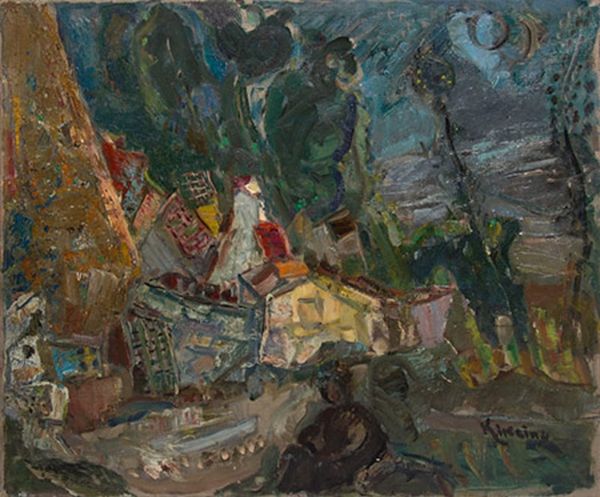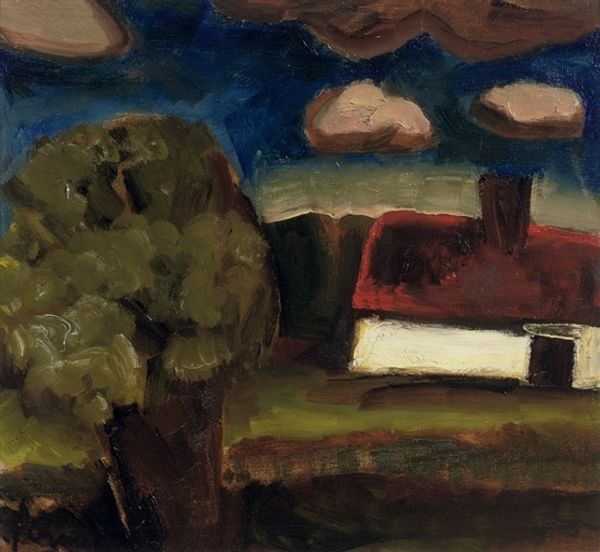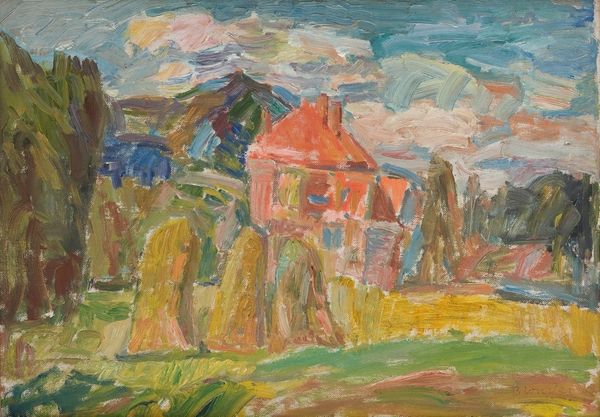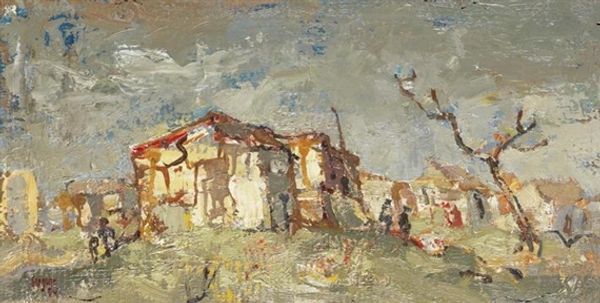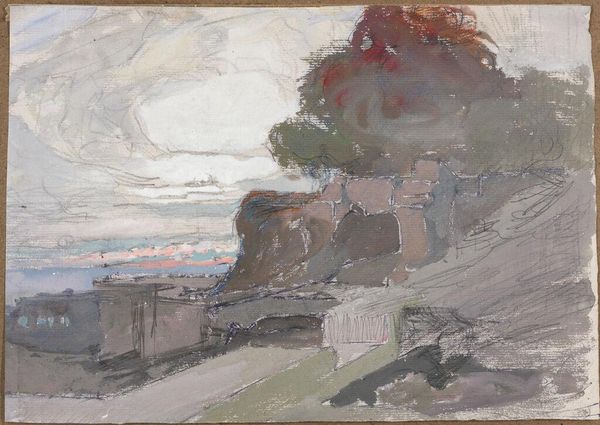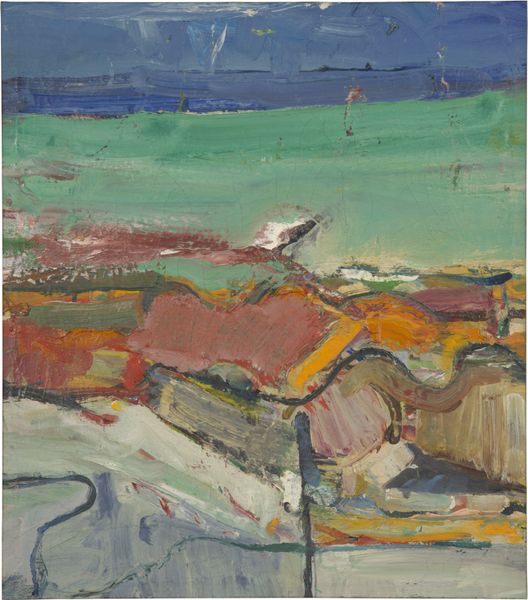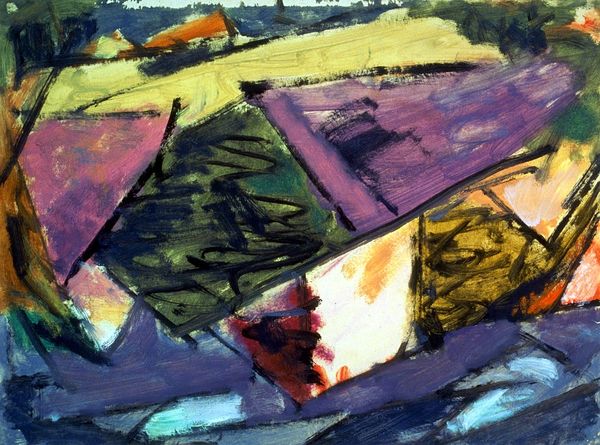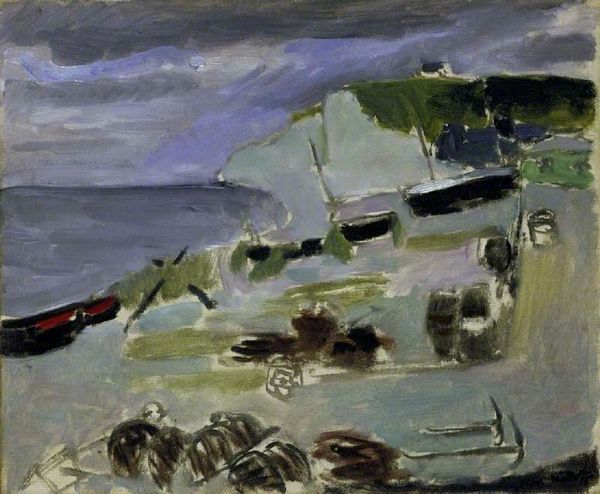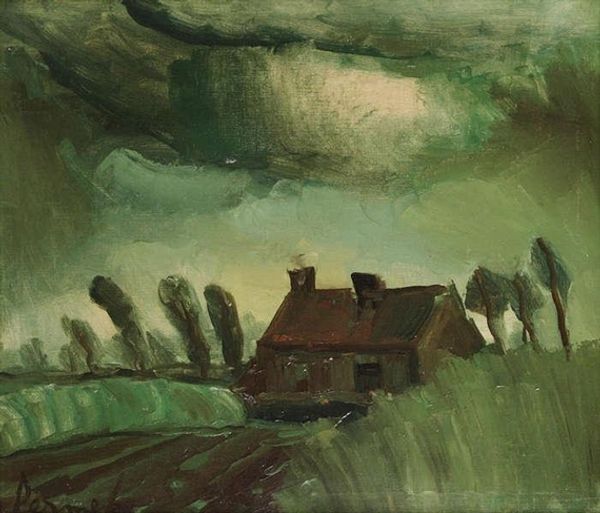
plein-air, oil-paint, impasto
#
plein-air
#
oil-paint
#
landscape
#
oil painting
#
impasto
#
expressionism
Copyright: Constant Permeke,Fair Use
Curator: Welcome! Today, we’re looking at "Working the Field" by Constant Permeke. It's an oil painting, executed with impasto and in plein-air style, typical of his expressionistic landscapes. Editor: It's... brooding. Those heavy, earthy colours—greens, reds, and browns—create a palpable sense of weight. And the thick impasto makes everything feel so dense and tangible. It almost feels oppressive, really. Curator: Precisely. The density underscores Permeke's stylistic focus: an emphasis on materiality and formal construction. Note the flattened perspective and simplified forms; the cottages, hills, and sky are all reduced to fundamental geometric shapes. Observe, too, the lack of detailing. Editor: The absence of detail only amplifies its intensity. This landscape isn't just a visual scene, it’s a depiction of manual labour, which permeates throughout the visual narrative. How do you think Permeke's own socioeconomic background may have contributed to his perspective of rural life and labor? Curator: Ah, that reading falls beyond purely aesthetic concerns. Though I agree we see an idealisation of form. These weighty, monolithic blocks of color construct a self-contained reality rooted not so much in an authentic landscape experience, but in the purely material qualities of the medium. Editor: Yet the social and historical context informs that materiality. The brushstrokes themselves, laid down so heavily, can be interpreted as embodying the weight and strenuousness of manual labour. The dark colour palette feels almost claustrophobic, representing the limited opportunities and hardships faced by rural workers. Curator: True, and perhaps Permeke’s aesthetic rendering translates to broader symbolic interpretations – about mankind and nature for example. What remains fascinating to me, however, is how that vision of "Working the Field" creates this powerfully affective visual experience through fundamentally artistic choices of form, color, and application. Editor: And ultimately, understanding both allows for a more meaningful encounter with the artwork. Curator: Precisely! I'm glad we could reflect on both the construction and potential interpretation of Permeke’s ‘Working the Field’ here today. Editor: Absolutely! Hopefully, we’ve helped illuminate how those contextual influences resonate in art and create opportunities for cultural reflection.
Comments
No comments
Be the first to comment and join the conversation on the ultimate creative platform.
